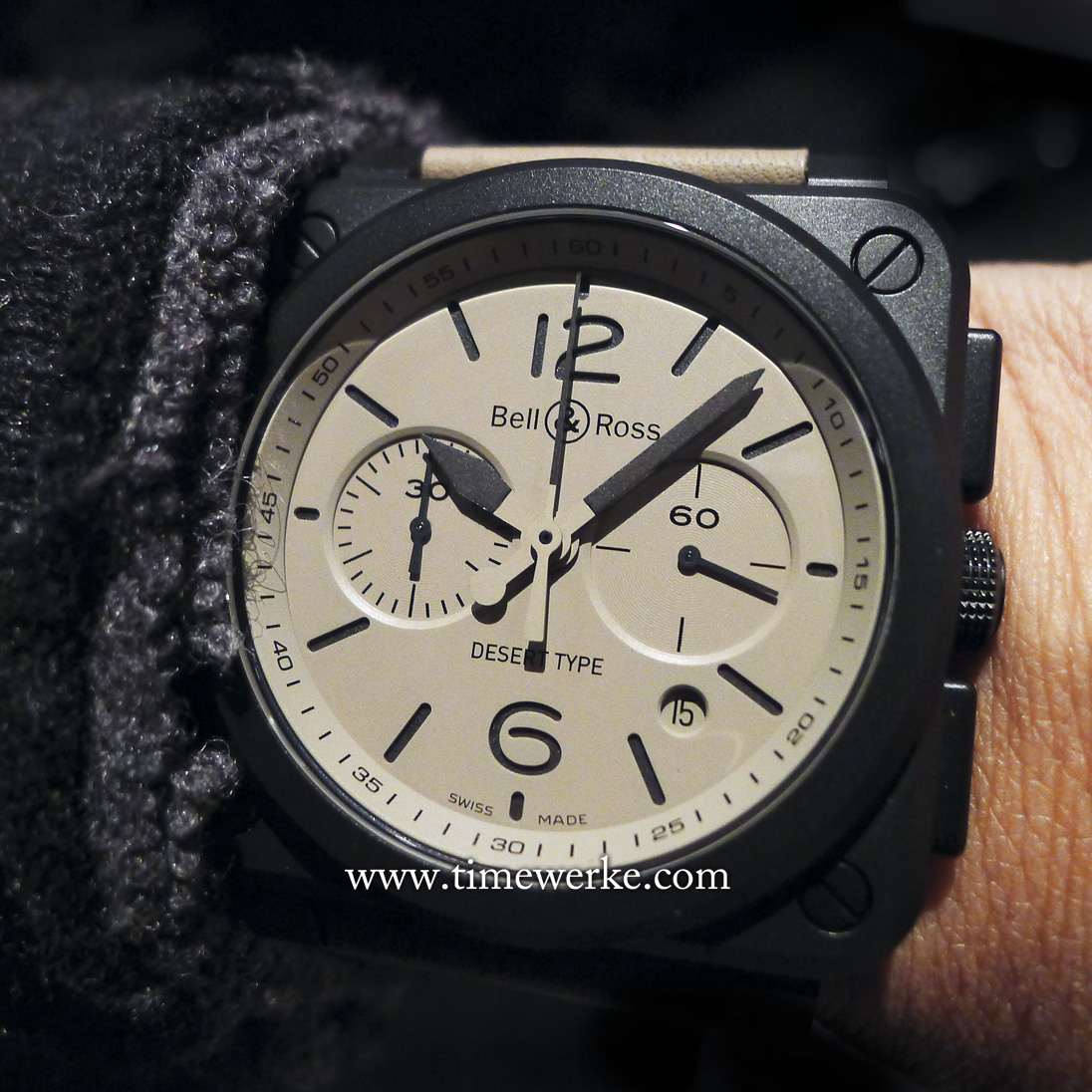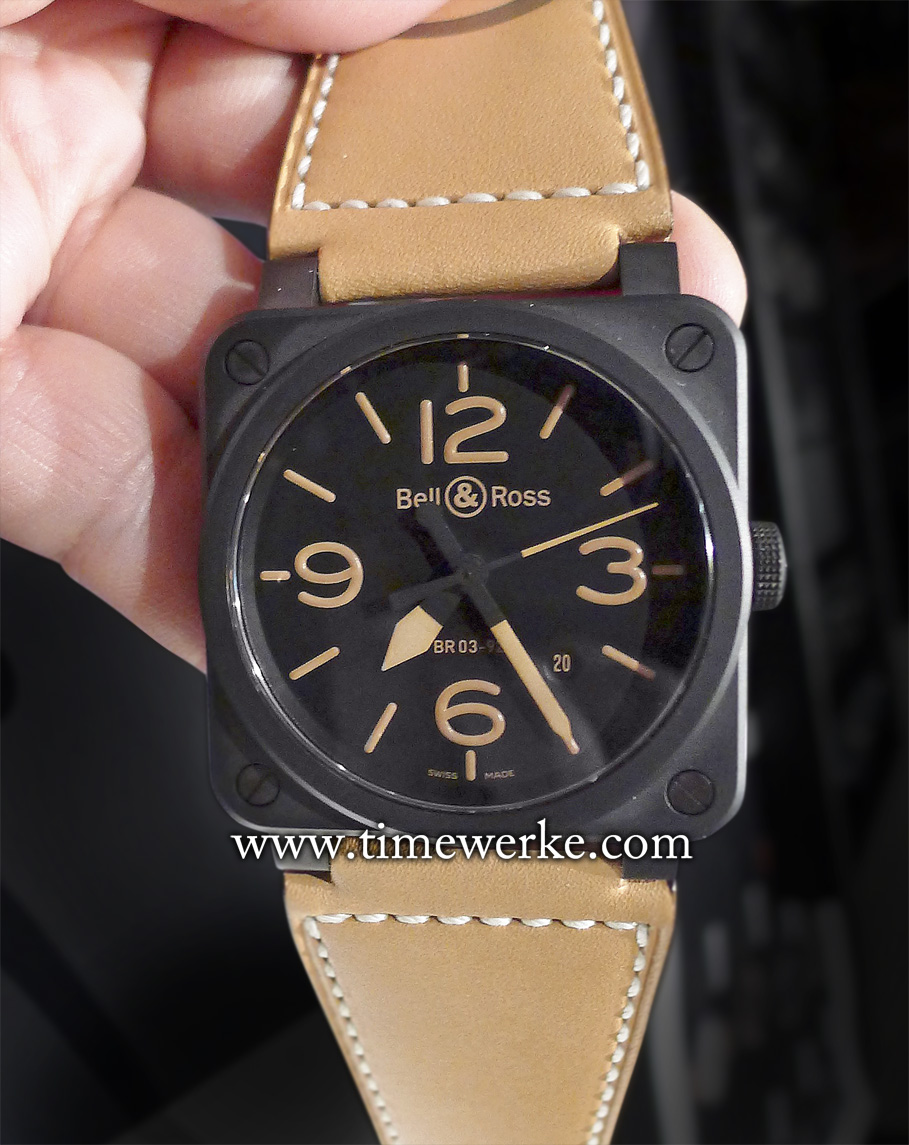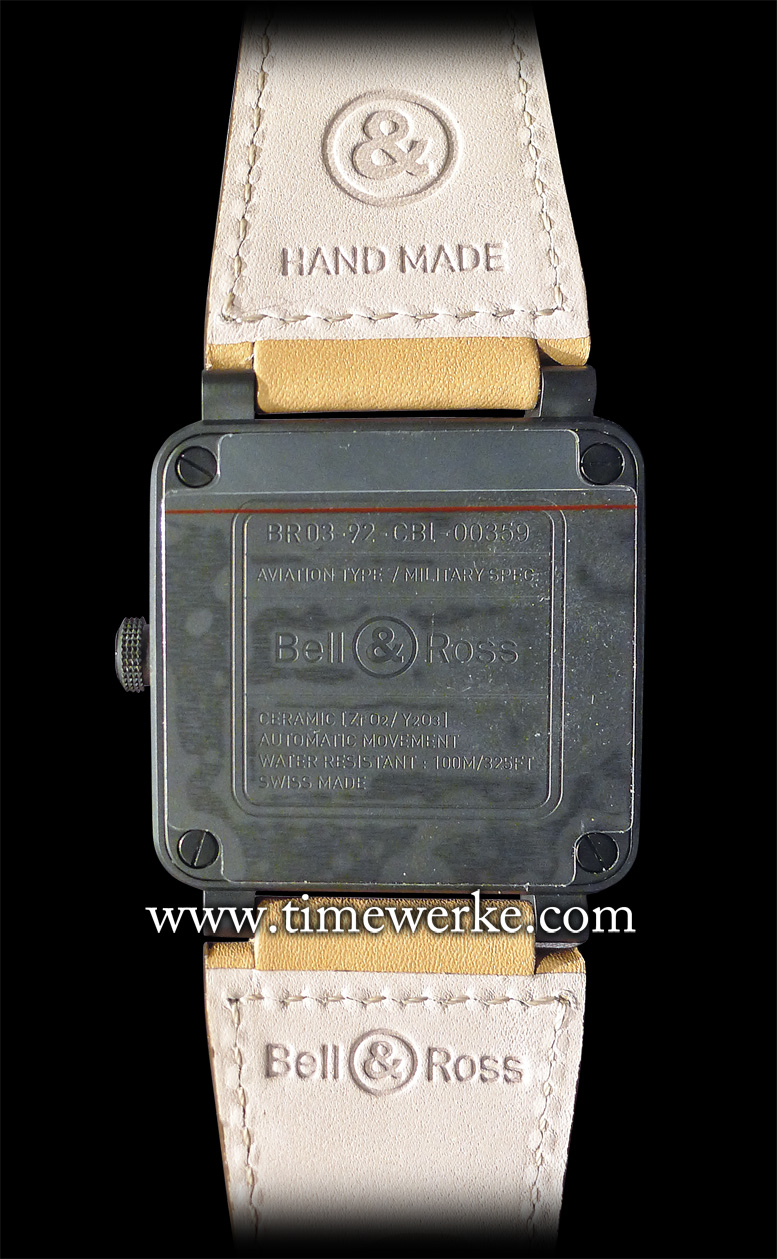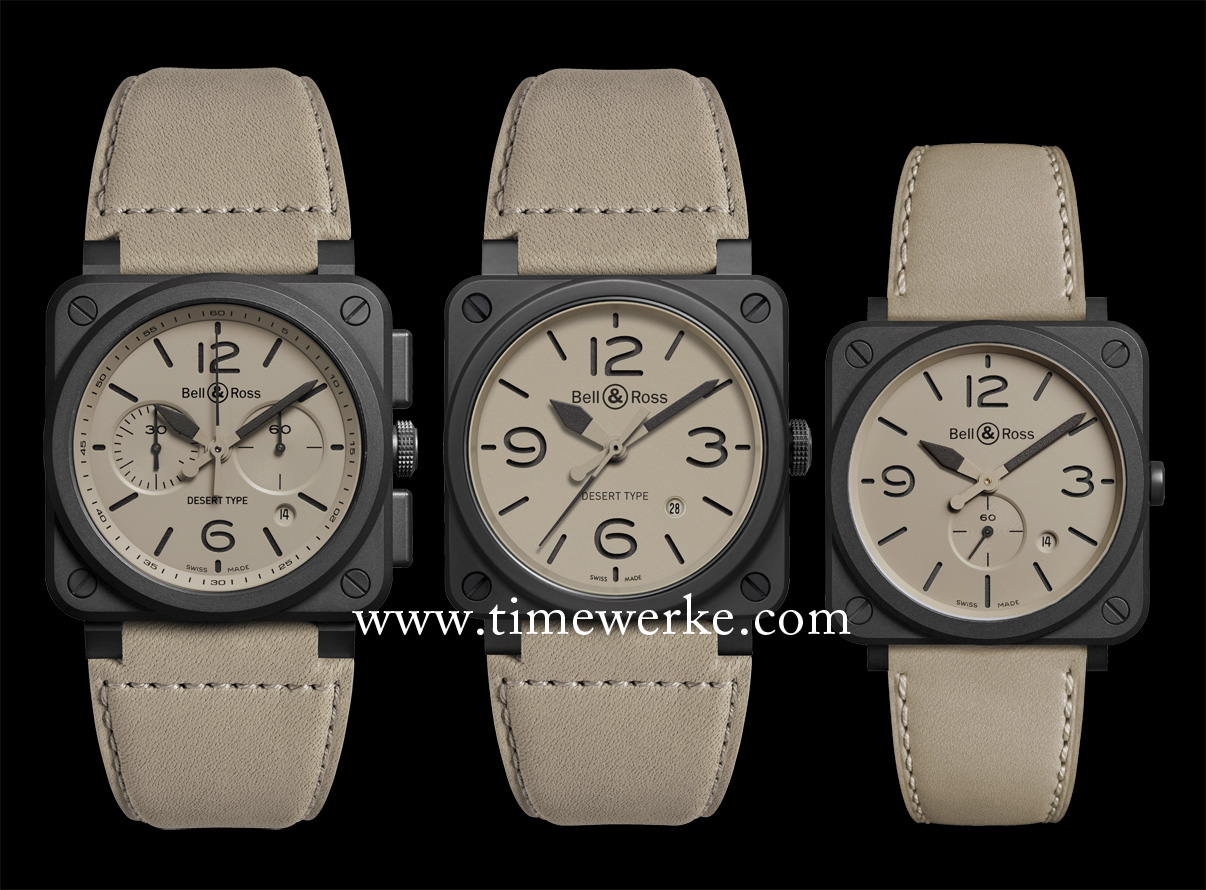
Bell & Ross BR 03-94 Desert Type chronograph. Powered by the BR-Calibre 301 automatic movement, its 42mm case is in matt black ceramic and the watch is water-resistant to 100m. Launched in 2016. Can you tell what else is new apart from the sand-coloured dial? Photo: TANG Portfolio / TimeWerke. BaselWorld 2016.
“What is different about the Bell & Ross BR ceramic watches apart from the case material?” a dear friend who owns one such piece asked two years ago. That was sometime in mid-2014.
“If you don’t know, you are ‘screwed’,” was the crude challenge my dear friend issued to me.
Thankfully, I already had a good discussion with Bruno Belamich, creative director and co-founder of Bell & Ross at the annual BaselWorld watch fair held in late March 2014.
That being said, I wasn’t “screwed”. Speaking of which, take a close look at the four prominent screws (pun most definitely intended) found at the corners on the case of the Bell & Ross Ceramic Heritage in particular, a model that was part of the 2014 collection.
Note the positions of the drive recesses on each visible slotted screw head. The “drive recess” is the slot by which one inserts the tip of the screwdriver, known as the “driver”, to turn the screw.

Bell & Ross BR 03-92 Ceramic Heritage. Launched in 2014. Observe the four prominent screws found at the corners on the case and the positions of the drive recesses on each visible slotted screw head. The “drive recess” is the slot by which one inserts the tip of the screwdriver, known as the “driver”, to turn the screw. Photo: TANG Portfolio.
The tool or screwdriver type used depends on the drive recesses on the various screw heads. In the case of the Bell & Ross BR watches, the slotted screw head types are used.
The drive recesses on the Bell & Ross Ceramic Heritage are diagonally placed, forming an imaginary cross. Using the drive recesses as references, there is an imaginary diagonal line from 1.30 to 7.30 and another from 4.30 to 10.30.
These slotted screw heads now appear more organized unlike previous BR models whereby the direction of drive recesses on the screw heads seem to be random.
Observe carefully once more and you may notice that the drive recesses of the screw heads at the 10.30 position and 1.30 position on the ceramic watches actually form the 10 past 10 look (imagine the hour hand pointed at the 10 o’clock index and the minute hand at the 10th minute track).
“Such a design is actually more comfortable on the eyes,” highlights Belamich.
We agree and such an organised positioning of the drive recesses of the screw heads on the dial side of the ceramic watches makes them very much more appealing.
Do note that the inclusion of the four screws on the Bell & Ross BR case are inspired by the front-mounting system of instruments in the cockpits of aircraft. Moreover, these screws are functional as they secure the bezel to the case and ensure water-resistance.

The four screws seen on the front of the case are inspired by the front-mounting system of instruments found in aircraft cockpits. The screws are not just aesthetical; they are also functional and used to secure the bezel to the case and ensure water-resistance. The drive recesses of the screws as seen from the back of the Bell & Ross BR 03-92 Ceramic Heritage are more random as they are secured or turned from the rear. Photo: TANG Portfolio.
Two years later and right after the 2016 BaselWorld watch fair, it was time to challenge my dear friend with a similar question.
“What is different about the Bell & Ross BR Desert Types in ceramic apart from the case material and position of the drive recesses of the screw heads?” I asked.
As I wasn’t as crude nor unrefined as he was, I politely added that he’d have to buy me coffee and a sandwich if he could not provide the correct answer.
As his powers of observation had failed him after showing him visuals of the 2016 BR Desert Types, I told him the clue was actually the penalty – the sandwich.
The dials of the Bell & Ross Desert Types feature sandwich dials where two layers are used for the dial. The Arabic numerals and hour markers are cut away on the upper layer while the bottom layer is coated with a black photoluminescent.
“This is the very first time we are presenting a watch with a sandwich dial,” notes Belamich.

From left-to-right: Bell & Ross BR 03-94 Desert Type 42mm chronograph priced at SGD8,200, BR 03-92 Desert Type 42mm (three hands with date display) priced at SGD5,600 and BR S Desert Type quartz 39mm priced at SGD3,800. The Desert Type models were introduced in 2016 with the sandwich dial used by the brand for the very first time. Photo: © Bell & Ross. BaselWorld 2016.
Moreover, from what we understand, the brand has ceased using black PVD-coatings on stainless steel cases (Particle Vapour Deposition) in favour of ceramic watchcases.
The stainless steel pin buckle, however, remains black PVD-coated.
As for my dear friend, he is currently contemplating his next possible Bell & Ross purchase, having understood the differences between the different BR models over time. At least his sandwich treat was in exchange for added value in the form of credible product information from a collector’s point of view.
As for Bell & Ross, the brand is consistently driving ahead in terms of product development, what Belamich rightfully terms “evolution”.
We believe collectors will be surprised and hopefully pleased with more of the Bell & Ross 2016 product line-ups that have yet to be launched.
